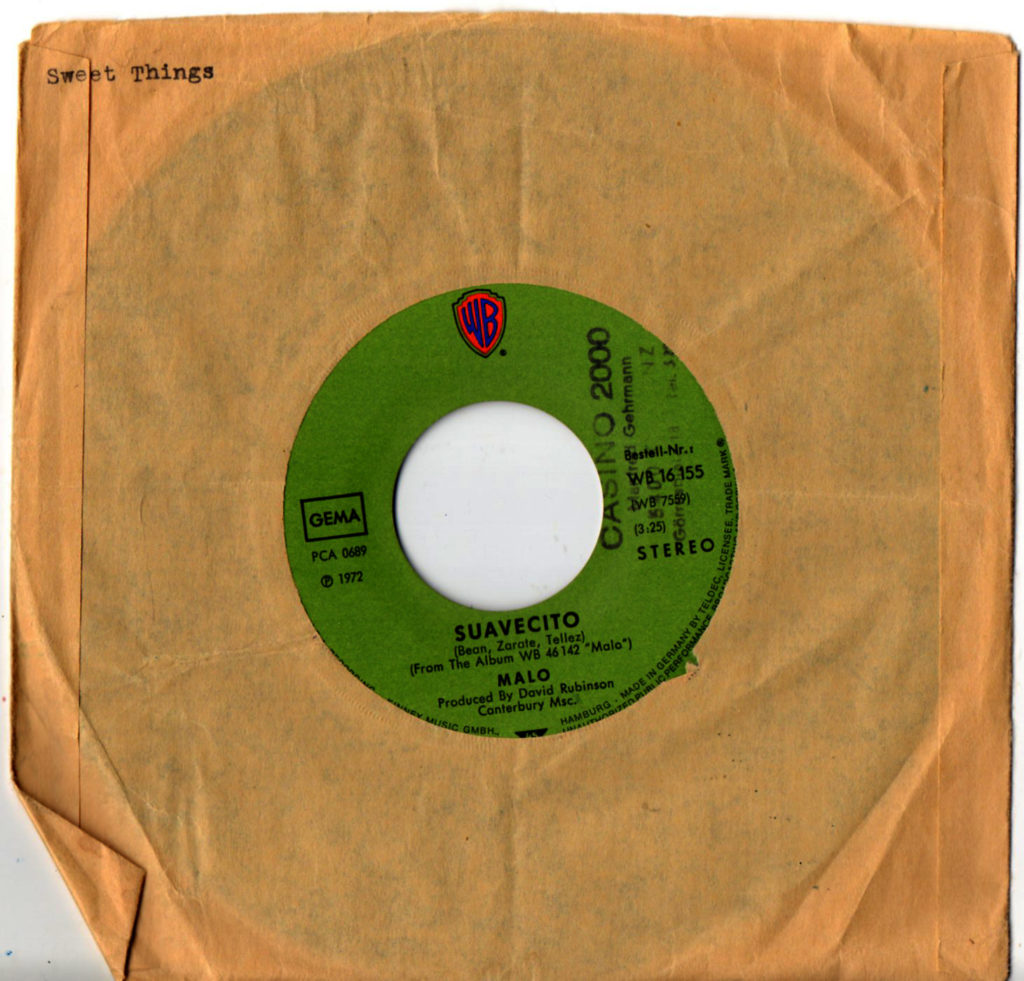This month’s 7″ selection brings New York City summer streets to the Welsh hills.

Malo
Sauvecito
Warner Brothers
1972
Great heaving clouds of pollen have forced me inside. I close the windows and sit in a darkened room. I let the silence be everything. It’s the 4th of July and I think back to a childhood of summers spent in the Missouri hills. Then, as now, unseen waves of pollen pushed around doing their mysterious business. I was immune then, I was bullet proof, I was a kid on a bicycle on an empty gravel road; now my eyes stream and my head aches. Thinking about that gravel road leads me to the summer I turned 17 in New York and how it had invented an entirely different way of doing summer, how the heat blasted up from the street and floated shoulder high all June, July and August.
I remember standing on Avenue A, looking in the window of a Puerto Rican bodega, at bags of dried chillies, plastic cups and plates, boxes of cereal, statues of the Virgin Mary, when from the back of the shop I heard the song that would come to define Summer In The City. The bodega in front of which I stood was called Dias Felices. It was, for a while, my neighbourhood shop. It’s there I bought peanut butter and tins of soup and bags of handmade polvoron. The song was called ‘Sauvecito’ by Malo. There were days when you could walk from my apartment on the Lower East Side, through Tompkins Square, downtown to the Brooklyn Bridge, and hear it twenty times, coming out of boom boxes, out of taxis, out of shops and apartments.
Today, I try an experiment. I decide to introduce the Welsh summer hills to New York City summer streets. I decide that perhaps a dose of Sauvecito might somehow neutralise the pollen. I open the window, put on the record, and let Malo push around the hills. I imagine a gentle war, music versus pollen, each one swirling into and colouring the other. I sit back, wait and listen.
I remember that in the back of Dias Felices there was a woman named Carlotta Cruz who gave life advice. For five dollars she could see into the future or contact dead relatives. She was also a seamstress specialising in wedding dresses and teenage pageant gowns. It was she that made the trays of polvoron. I imagine that she too was engaged in some form of alchemy, sending Sauvecito out into the streets in the hopes of creating a more liveable, less threatening neighbourhood. I think that’s what Sauvecito is; a balm, a medicine, a temporary healing force.
*
You can follow the Jeb’s Jukebox Spotify playlist here.